With a hopeful outlook on a rather gloomy subject, artist Ginny Ruffner created an environment of invented plant life, inviting viewers to consider what might exist in a post-apocalyptic landscape. Ginny Ruffner: Reforestation of the Imagination, the first exhibition at the Woodson Art Museum to incorporate augmented reality, is proving to be a popular destination for visitors of all ages.
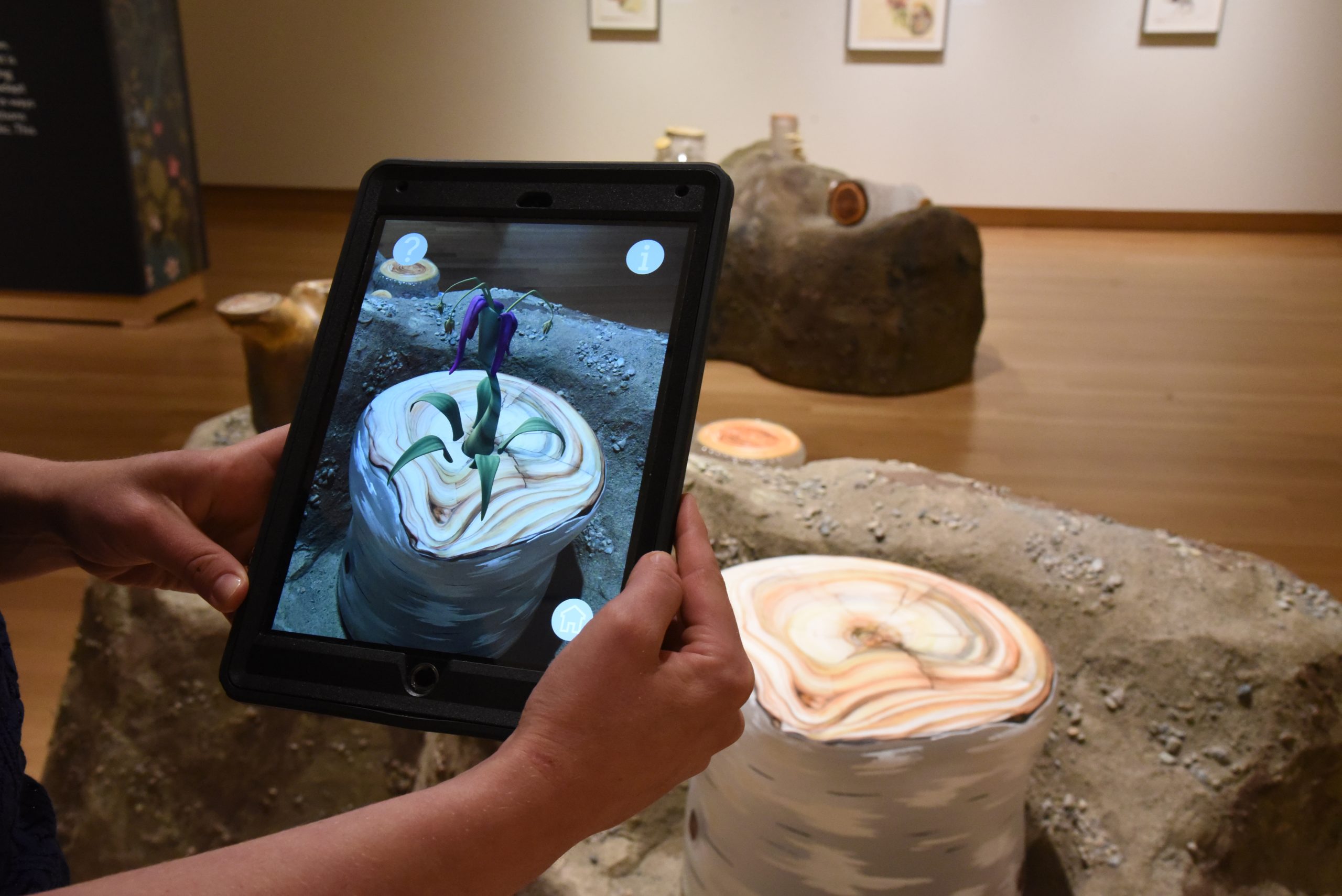
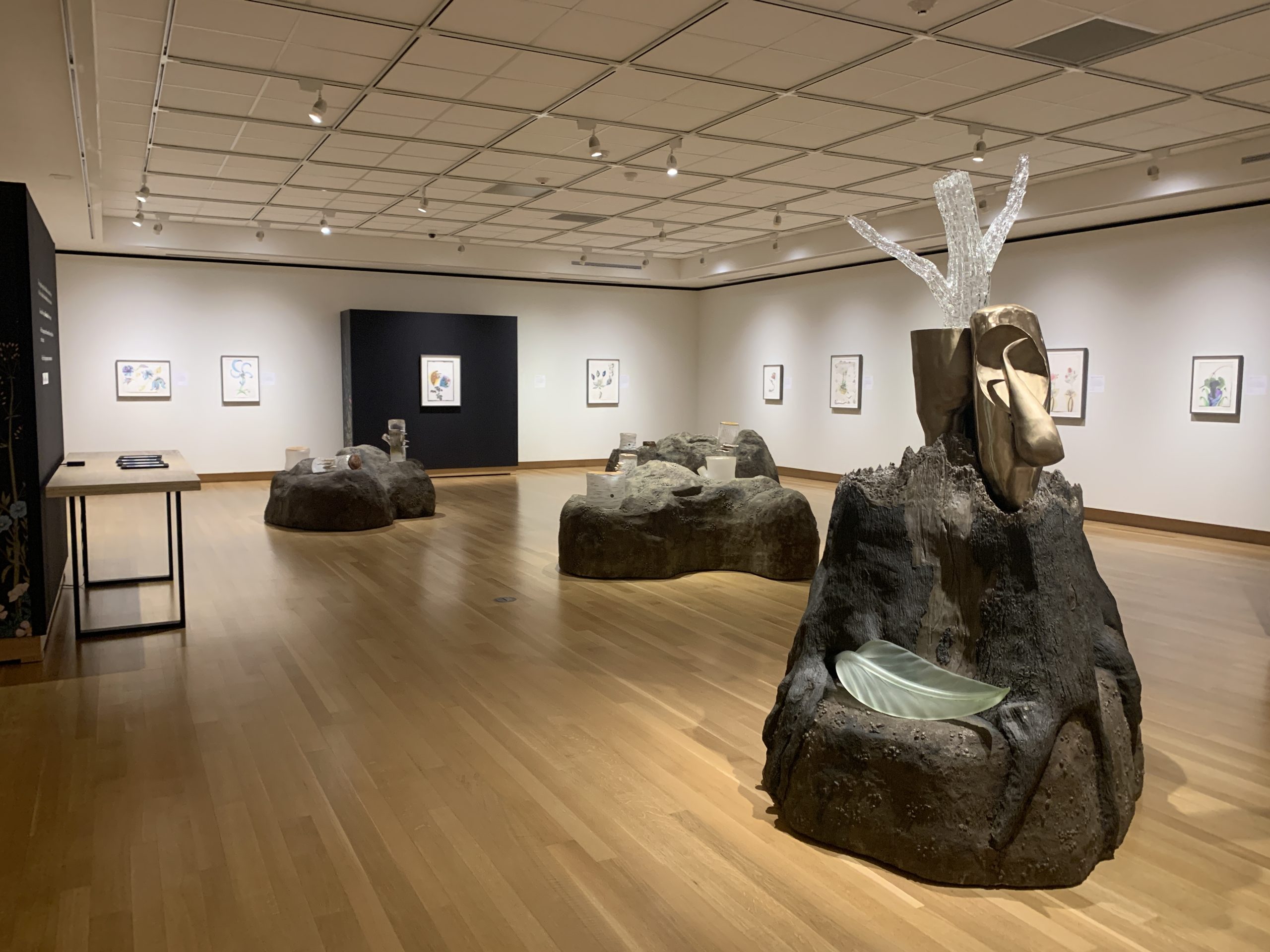 Large sculptures of “islands” or landmasses topped with glass stumps are dispersed throughout the gallery, surrounded by surrealistic drawings of Ginny’s plant creations like Ventus ingenero or “windmill flower.” Her drawings combine recognizable botanical shapes and textures with playful additions like fish, birds, or reptiles which serve as the stems, leaves, or petals of her imagined flowers. Scannable tree rings atop the glass stumps bring Ginny’s drawings to life in augmented reality on a mobile device. These digital representations highlight the motion and animation of Ginny’s creations that can’t be fully captured in two dimensions. The petals of Ventus ingenero spin like the blades of a windmill, Musa saponifica blows bubbles, and Lacertus vespertilio flaps its bat-wing leaves on screen.
Large sculptures of “islands” or landmasses topped with glass stumps are dispersed throughout the gallery, surrounded by surrealistic drawings of Ginny’s plant creations like Ventus ingenero or “windmill flower.” Her drawings combine recognizable botanical shapes and textures with playful additions like fish, birds, or reptiles which serve as the stems, leaves, or petals of her imagined flowers. Scannable tree rings atop the glass stumps bring Ginny’s drawings to life in augmented reality on a mobile device. These digital representations highlight the motion and animation of Ginny’s creations that can’t be fully captured in two dimensions. The petals of Ventus ingenero spin like the blades of a windmill, Musa saponifica blows bubbles, and Lacertus vespertilio flaps its bat-wing leaves on screen.
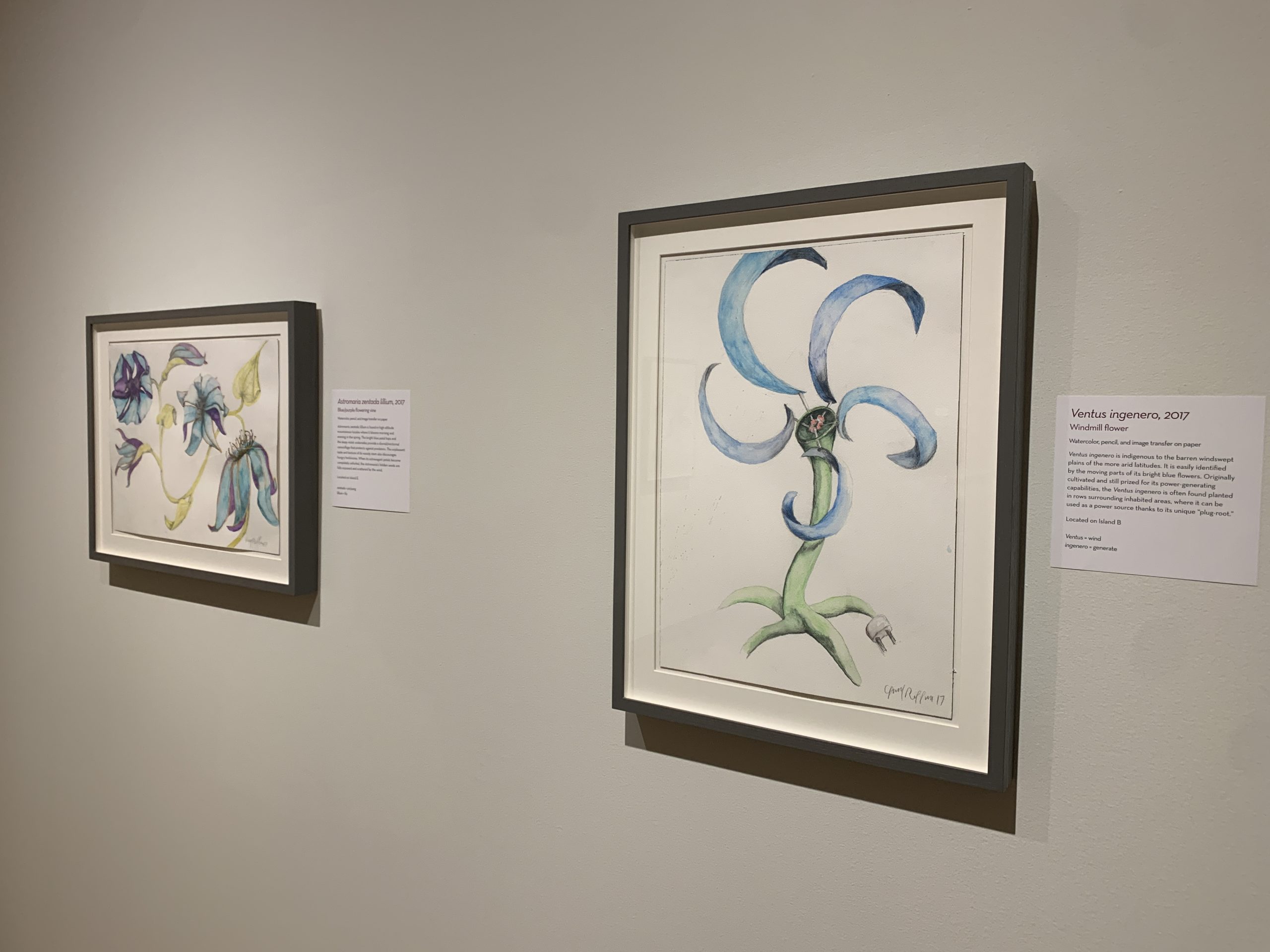
Museum visitors, adults and children alike, are becoming enamored with experiencing these drawings in a digital landscape. I can still hear the “oohs” and “aahs” of each student group resonating through the gallery after they pick up an iPad and explore a new world of animated sculptures in augmented reality.
As a Woodson Art Museum educator, developing projects and hands-on content for students has become one of the most rewarding parts of my job, and Ginny Ruffner’s artwork has been ripe with creative possibilities. For our various summer programs and partnerships, such as the Wausau School District’s Community Connections, fellow educator Catie Anderson and I took inspiration from Reforestation of the Imagination by prompting students to invent their own plant species, just like Ginny.
Students started by making a list of their favorite fruits, vegetables, flowers, and plants, and then selected at least two things from their list to combine. After completing an initial drawing, students used watercolor to finish their creations.
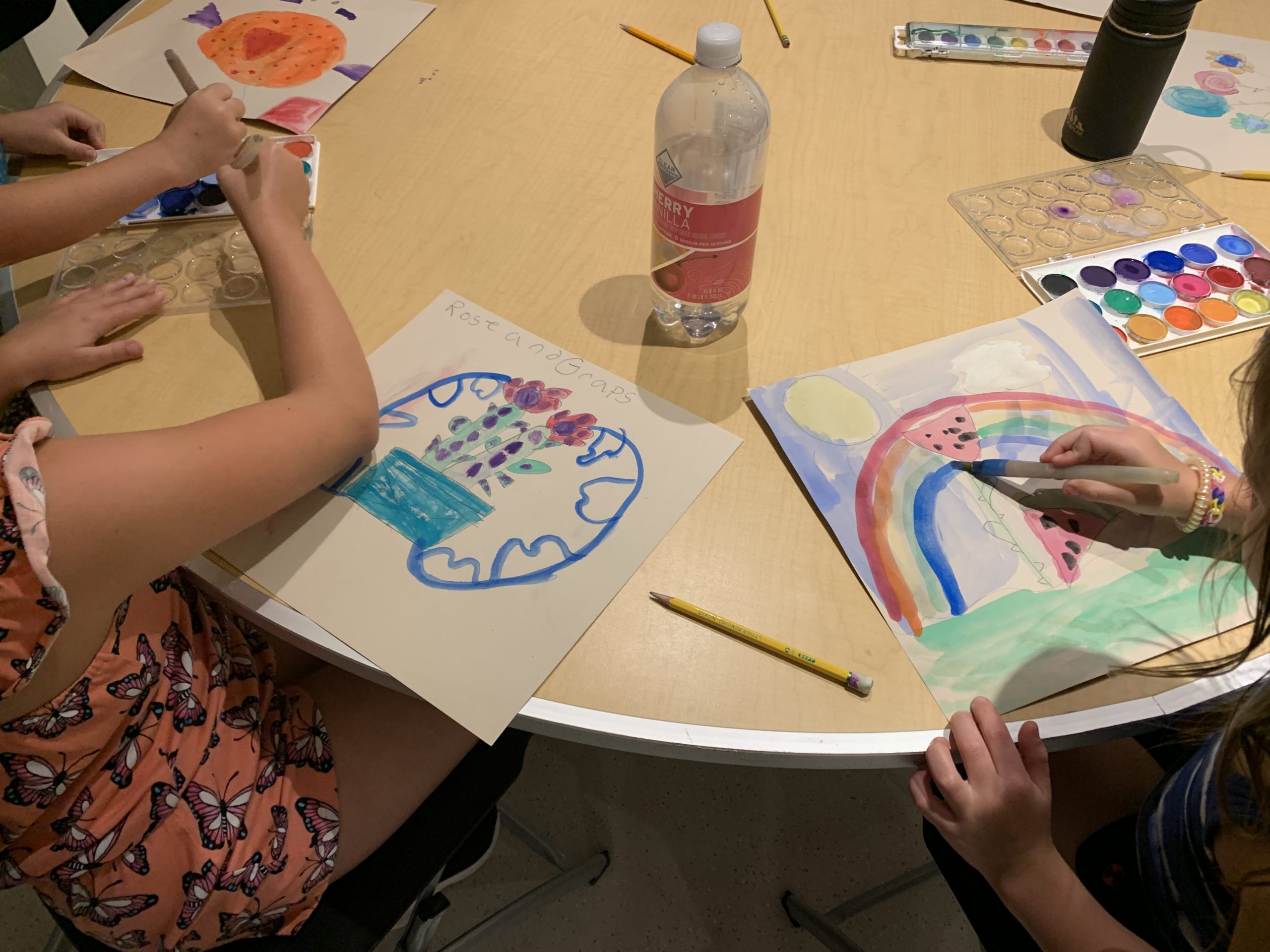
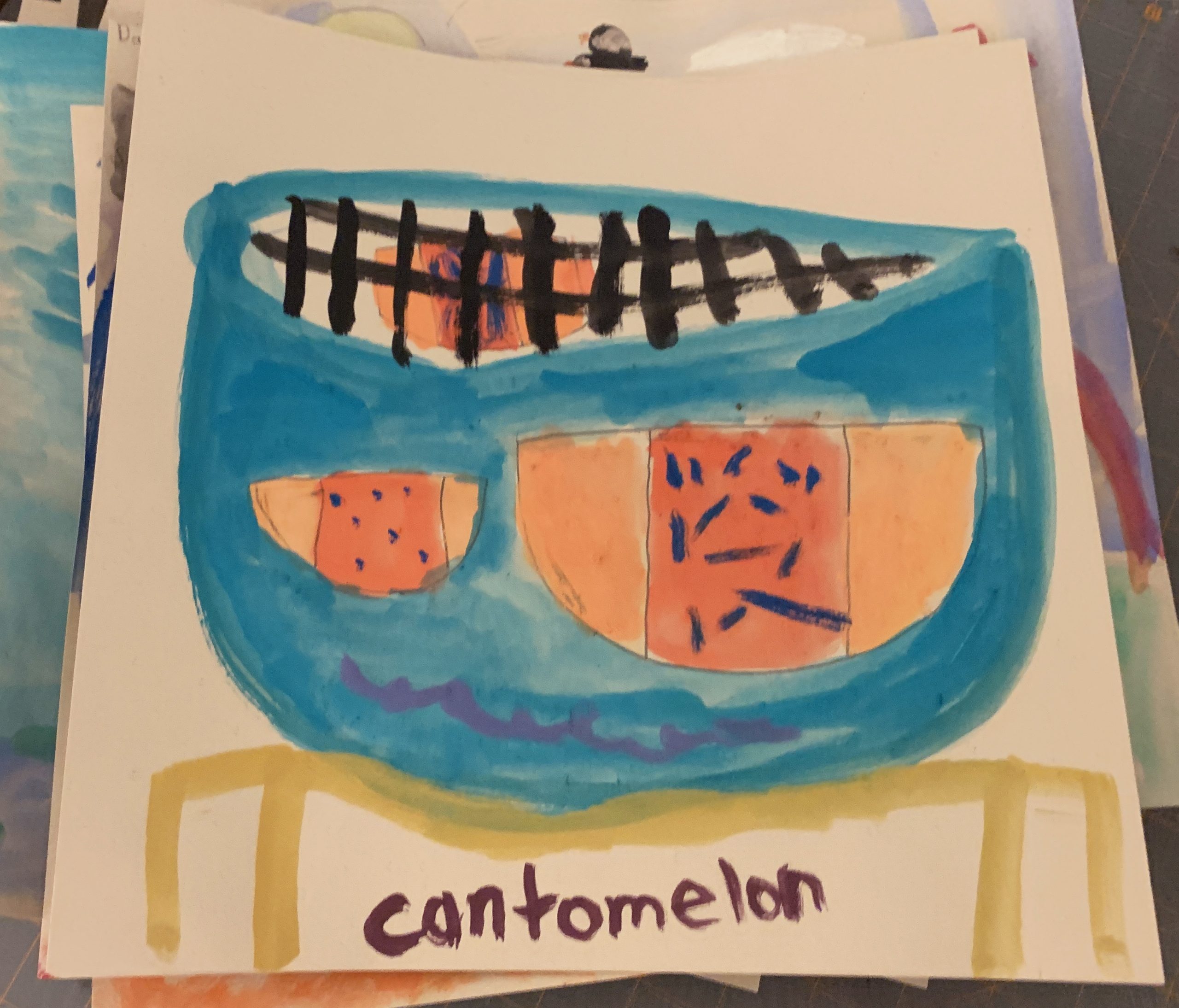
Reforestation of the Imagination opens up a world of creative opportunity for students, leading to questions like “Can I combine a cantaloupe and a watermelon?” or “What about a strawberry and a cactus . . . a pineapple and zucchini?” To which I answered, “Absolutely . . . what color will it be? Where does it grow? What will you name it?”
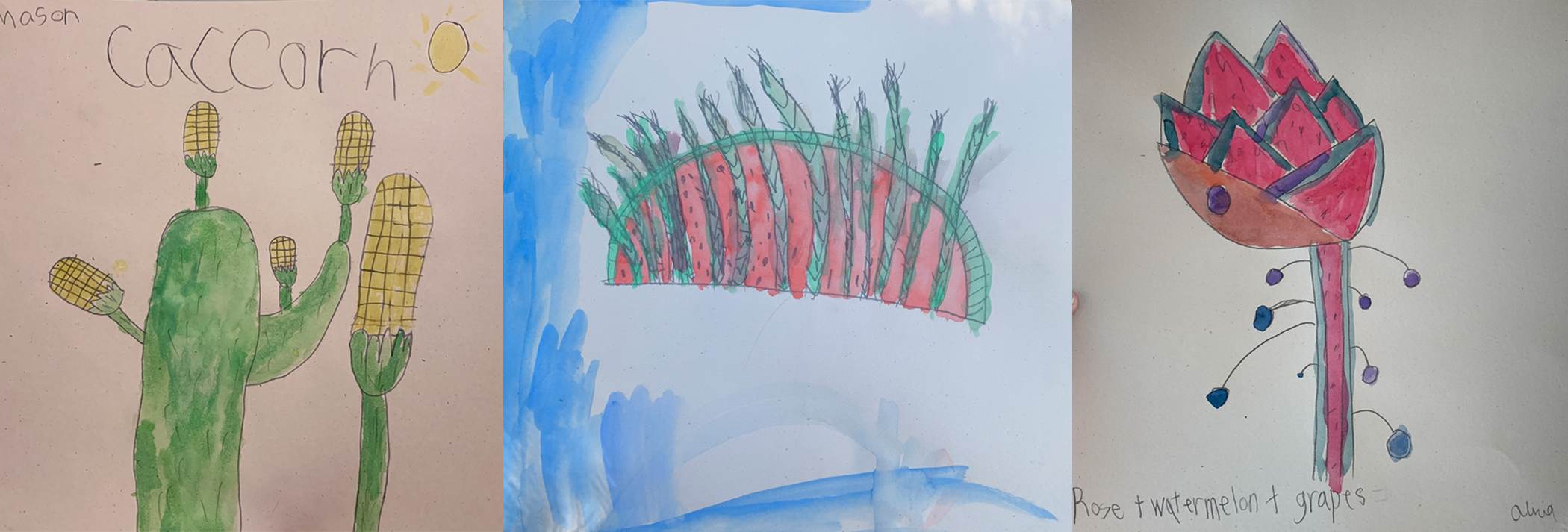
Exhibitions like this make my job easy, showing all visitors that creativity is limitless. Seize opportunities to experience sculptures in augmented reality by visiting soon and often; Ginny Ruffner: Reforestation of the Imagination remains on view through August 28.




